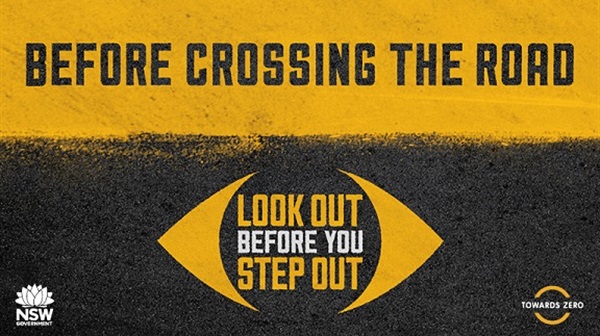Pedestrian Safety

Pedestrians are the most vulnerable road user
More than 1500 pedestrians are hit on NSW roads each year. Even if you are familiar with the road, it’s vital to take an extra moment to look out before you step out, and always choose the safest place and time to cross. We all have a part to play to bring the road toll Towards Zero.
Pedestrian fatal and serious injury crashes are more common in areas with higher pedestrian volumes, including higher risk metropolitan roads. A pedestrian hit by a car travelling at 50km/h is twice as likely to die as one hit by a car travelling at 40km/h.
The Look Out Before You Step Out campaign aims to improve pedestrian safety, particularly on higher risk urban roads. Upgrades to pedestrian safety infrastructure include changes to traffic signal timing to protect pedestrians from turning cars, more high pedestrian activity 40km/h speed zones, pedestrian countdown timers and trials of in-ground lights as an added warning when crossing the road.
For more information on Pedestrian Safety and programs, please visit Transport NSW - Centre for Road Safety page.
LOOK OUT before you STEP OUT
During high profile periods such as school holidays, special events and seasonal activities, pedestrian activity is high, especially with young children who may not have developed their sense of road safety yet.
Whether they are playing, riding bikes, or walking - their mind is not focused on the road and moving traffic.
Drivers: Remember to slow down in residential areas, particularly where there are a lot of young children visible.
Headphones and dress up costumes can effect the kids ability to hear and see cars. If they are wearing dark colours it can also make it hard for drivers to see them, especially at night.
Parents/Carers: If you are supervising kids, it is important to use designated crossing points such as traffic signals or marked pedestrian crossings where possible - remember to LOOK OUT before you STEP OUT.
Tips: Wear light or bright coloured clothing and at night use torches or glow sticks to help drivers see you.